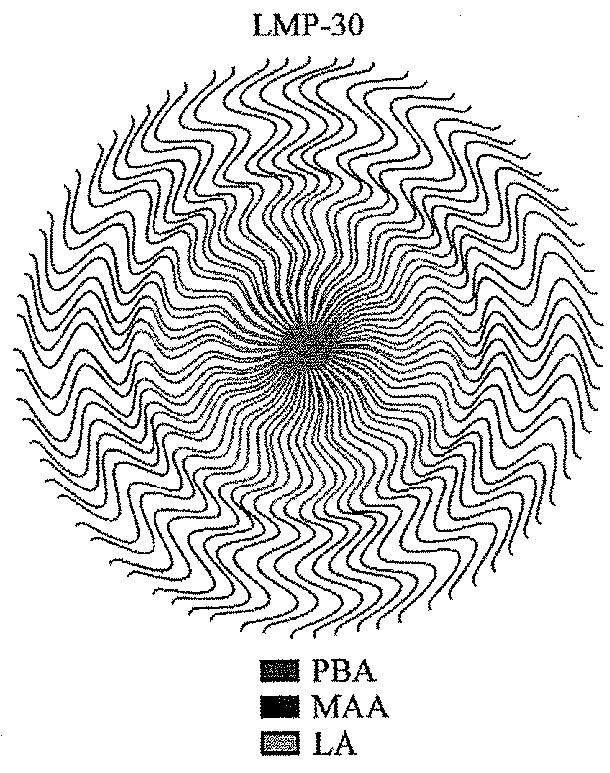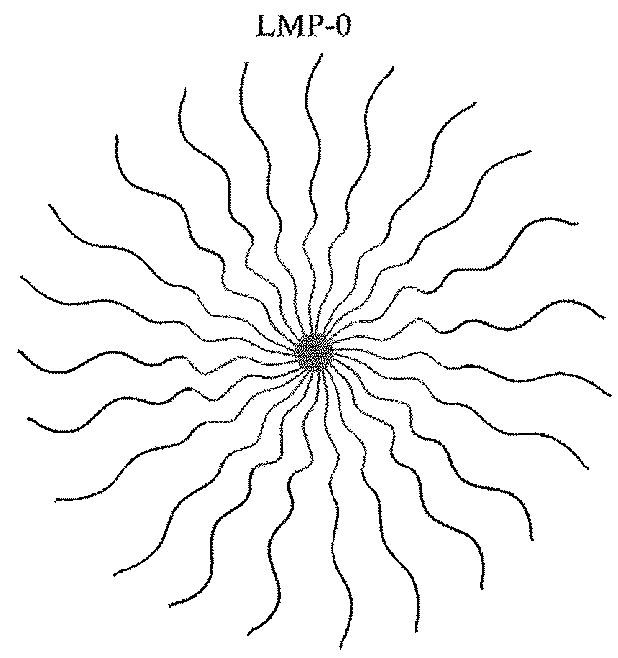Micelles for Mucoadhesive Drug Delivery
- Summary
- Abstract
- Description
- Claims
- Application Information
AI Technical Summary
Benefits of technology
Problems solved by technology
Method used
Image
Examples
example 1
[0046]Materials—Unless otherwise stated, all materials were purchased from Sigma Aldrich (Oakville, ON, Canada) and used as received. 3-acrylamidophenylboronic acid was purified by recrystallization in water. Azobisisobutyronitrile (AIBN) was purified by recrystallization in methanol. 1,4-dioxane, tetrahydrofuran, diethyl ether, N,N-dimethylformamide, and acetonitrile were purchased from Caledon Laboratories (Caledon, ON) and used as received. DMSO-d6 was purchased from Cambridge Isotope Laboratories Inc. (Andover, Mass. USA) and used as received. Purified water with a resistivity of 18.2 MΩ cm was prepared using a Milli-pore Barnstead water purification system (Graham, N.C. USA). Phosphate buffered saline (PBS) was purchased from BioShop (Burlington, ON, Canada). Cellulose dialysis membranes with molecular weight cut-off (MWCO) values of 3.5 and 50 kDa were purchased from Spectrum Laboratories Inc. (Rancho Dominguez, Calif. USA). 3-[4,5-dimethylthiazol-2-yl]-2,5-diphenyl-tetrazoliu...
example 2
[0067]This experiment was conducted to confirm that the present micelles exhibit mucoadhesion in an in vivo setting.
[0068]Micelles containing 20% PBA were modified covalently with 5-aminofluorescein (FA) using carbodiimide-mediated coupling. In a typical reaction procedure, copolymer was dissolved in dry dimethyl sulfoxide in a sealed flask containing a stir bar and covered in aluminum foil to avoid exposure to light. To this solution, 5-aminofluorescein, N,N′-Dicyclohexylcarbodiimide, and 4-Dimethylaminopyridine were added to achieve molar ratios of 100:30:110:10 for MAA groups:FA:DCC:DMAP, respectively. The flask was sealed with a rubber stopper and left to stir for 24 hours. After 24 hours of reaction, the solution was dialysed until sufficiently pure. A single 50 μL drop with 5 mg / mL of micelle was dropped into the eye of a healthy rat. After a single instillation, micelles containing 0% PBA showed no fluorescein staining after 1 hour, while micelles containing 20% PBA were clea...
example 3
[0069]To confirm the present micelles are suitable for use in vivo, a preclinical DED model was used in which DED was induced using the caustic chemical agent, benzalkonium chloride (BAC) (as described in Xiong et al., Cornea, May 2008).
[0070]First, it was determined what effect, if any, micelles without drug had on this DED model using the Schrimer's test in which paper test strips with graded markings wick up tear film and determine tear volume. Using the Schrimer's test modified for use in rats (i.e. test strips designed for humans were cut into thirds so each strip was only 1 / 3 as wide) tear volumes from DED rats after ‘treatment’ with micelles for 5 days (DED with micelles) were not found to be significantly different to tear volumes from untreated DED rats immediately following DED induction and after 5 days as shown in FIG. 10. Non-DED animals exhibited significantly greater volume of tear film (Control).
[0071]Tear osmolarity is often disregulated in DED. Similar to the previ...
PUM
| Property | Measurement | Unit |
|---|---|---|
| Percent by mass | aaaaa | aaaaa |
| Size | aaaaa | aaaaa |
| Molar density | aaaaa | aaaaa |
Abstract
Description
Claims
Application Information
 Login to View More
Login to View More - Generate Ideas
- Intellectual Property
- Life Sciences
- Materials
- Tech Scout
- Unparalleled Data Quality
- Higher Quality Content
- 60% Fewer Hallucinations
Browse by: Latest US Patents, China's latest patents, Technical Efficacy Thesaurus, Application Domain, Technology Topic, Popular Technical Reports.
© 2025 PatSnap. All rights reserved.Legal|Privacy policy|Modern Slavery Act Transparency Statement|Sitemap|About US| Contact US: help@patsnap.com



